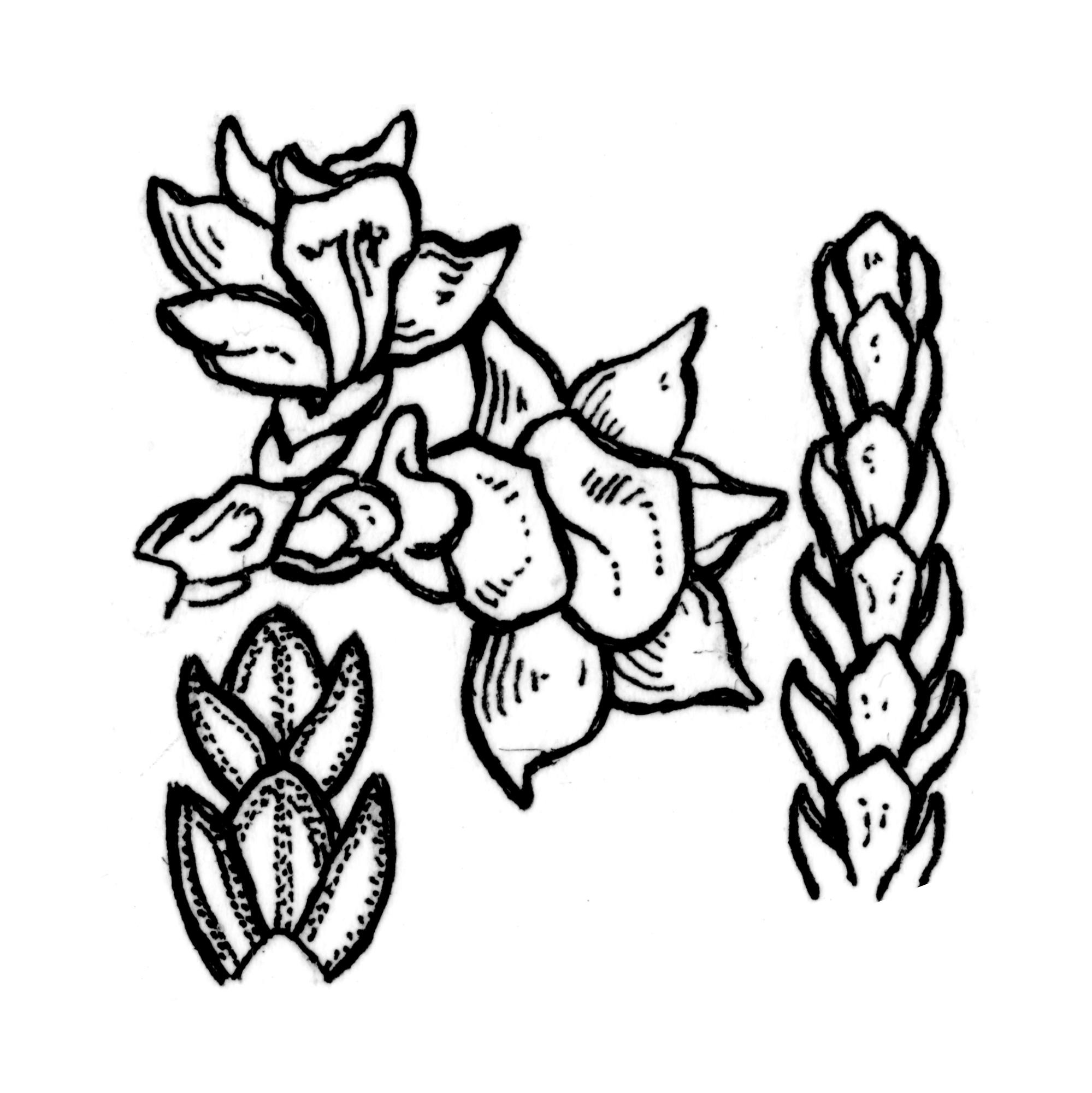
Greek mikros - small, Biota - a former name for Thuja.
Evergreen conical or occasionally columnar tree or shrub to about 30 m tall in nature; in cultivation rarely attaining 10 m and sometimes shrubby. Trunk often divided near the base. Bark reddish-brown and grey in old trees, fissured, peeling in papery sheets. Branches more or less whorled, bending downwards except at the ends, in old specimens arching to the ground and taking root. Foliage sprays held horizontally, tough, flattened. Scale leaves 3-5 mm long, thick and leathery, shining dark green above, both lateral and facial leaves with bright white bands below. Crushed foliage smells of turpentine. Cones of both sexes occur on the same plant. Male cones 2-3 mm long, black and inconspicuous. Female cones 8-12 mm long, globose, blue-grey at first becoming grey-brown when mature; scales mostly 8-10, thick, wedge-shaped, leathery to woody, the tip pointed and often hooked. Seeds 3-5 on the fertile scales, narrow, 2-winged.
1 species from Japan.
Similar to Thuja and Platycladus but with broader, flatter sprays, also much larger and thicker rigid flattened leaves with pure white bands beneath.
Source: (1995). Cupressaceae. In: . Horticultural Flora of South-eastern Australia. Volume 1, Ferns, conifers & their allies. The identification of garden and cultivated plants. University of New South Wales Press.
